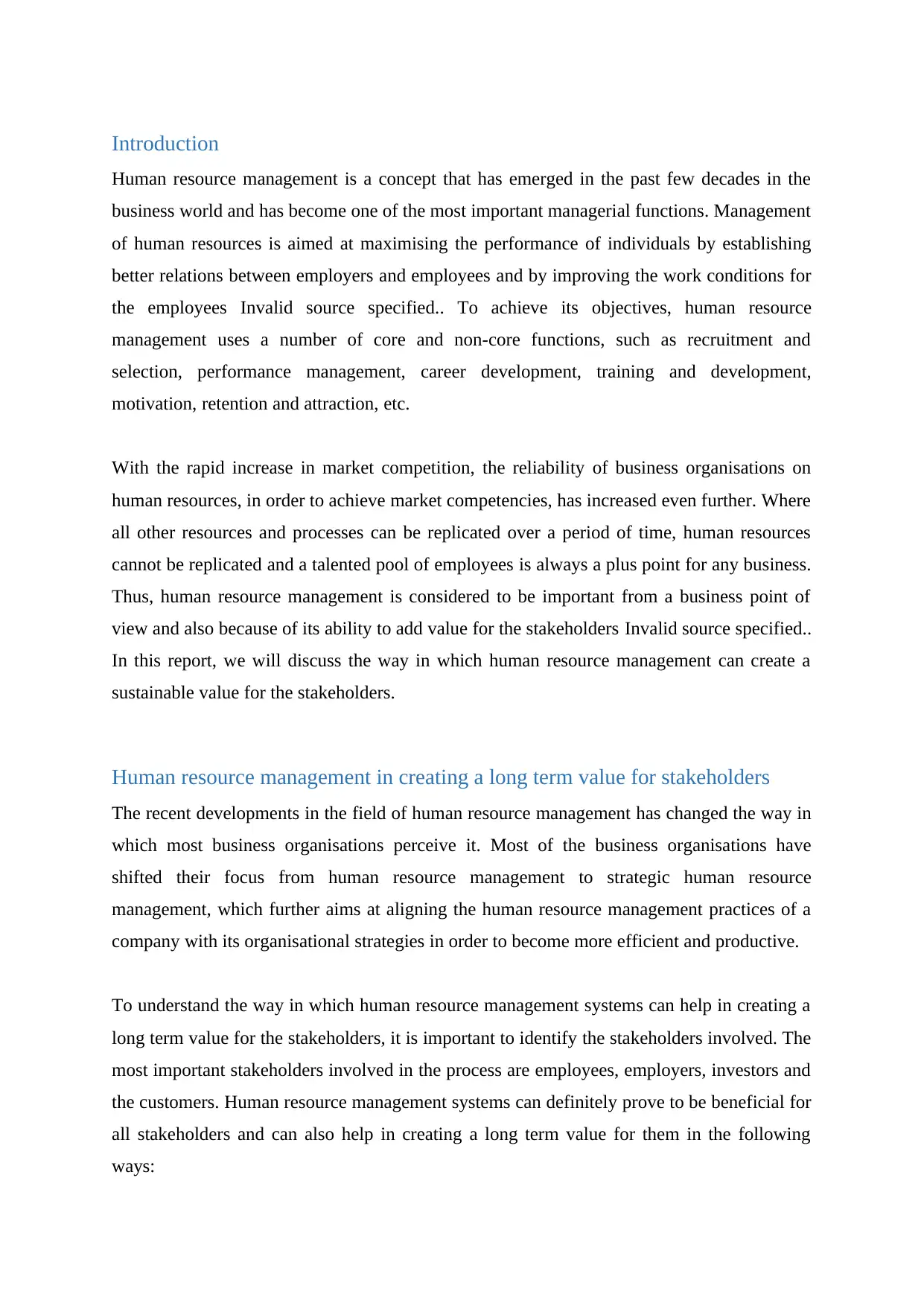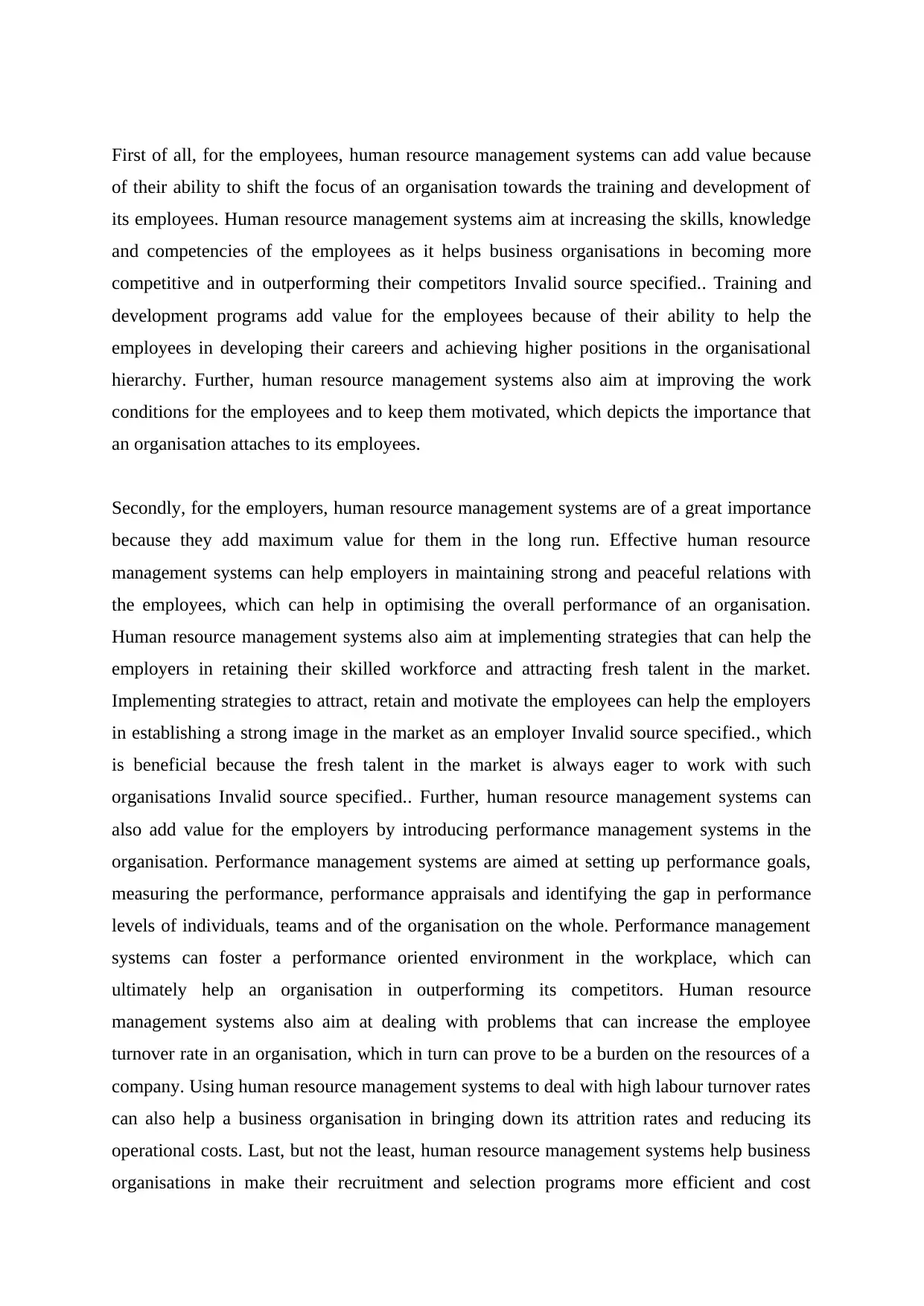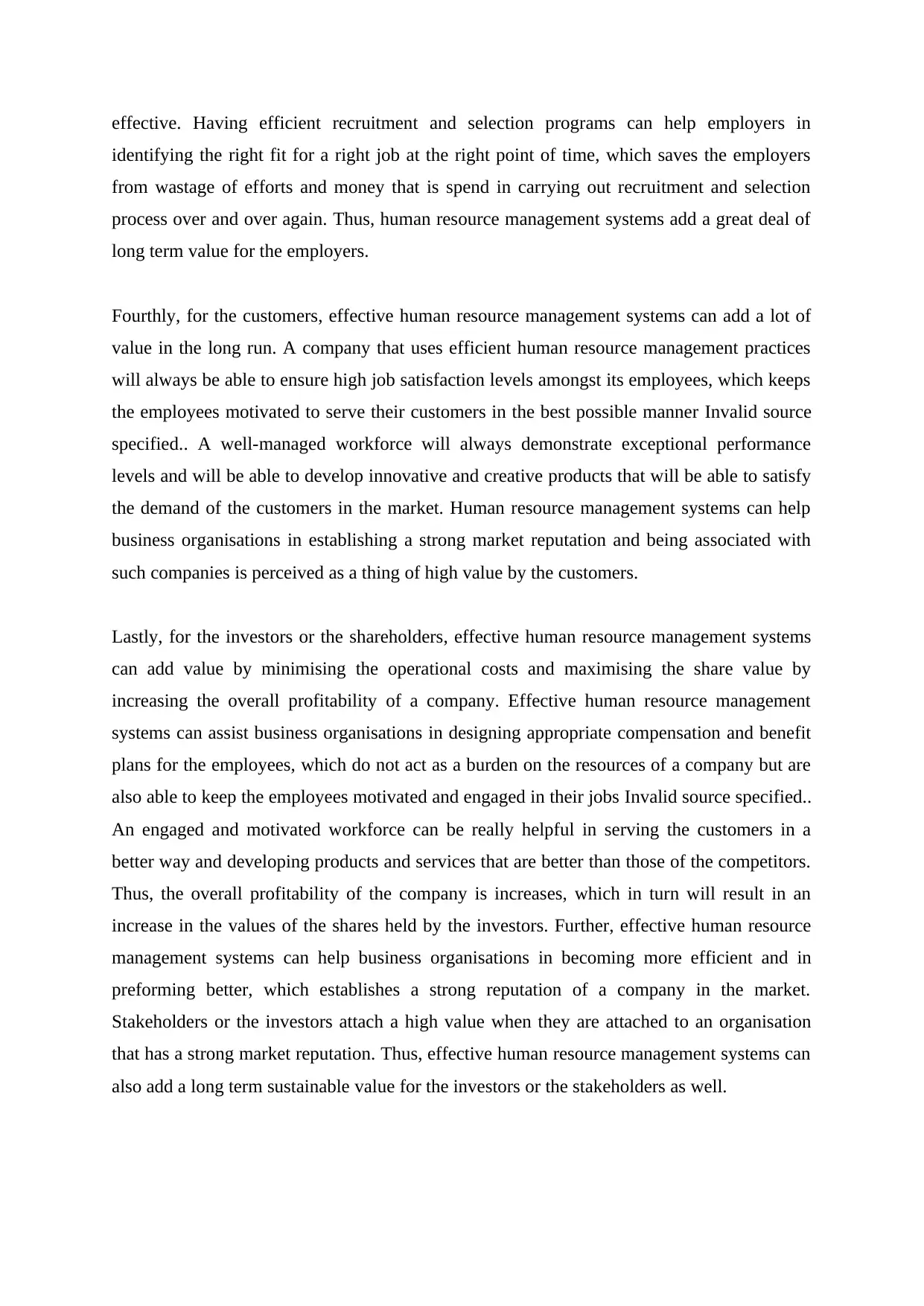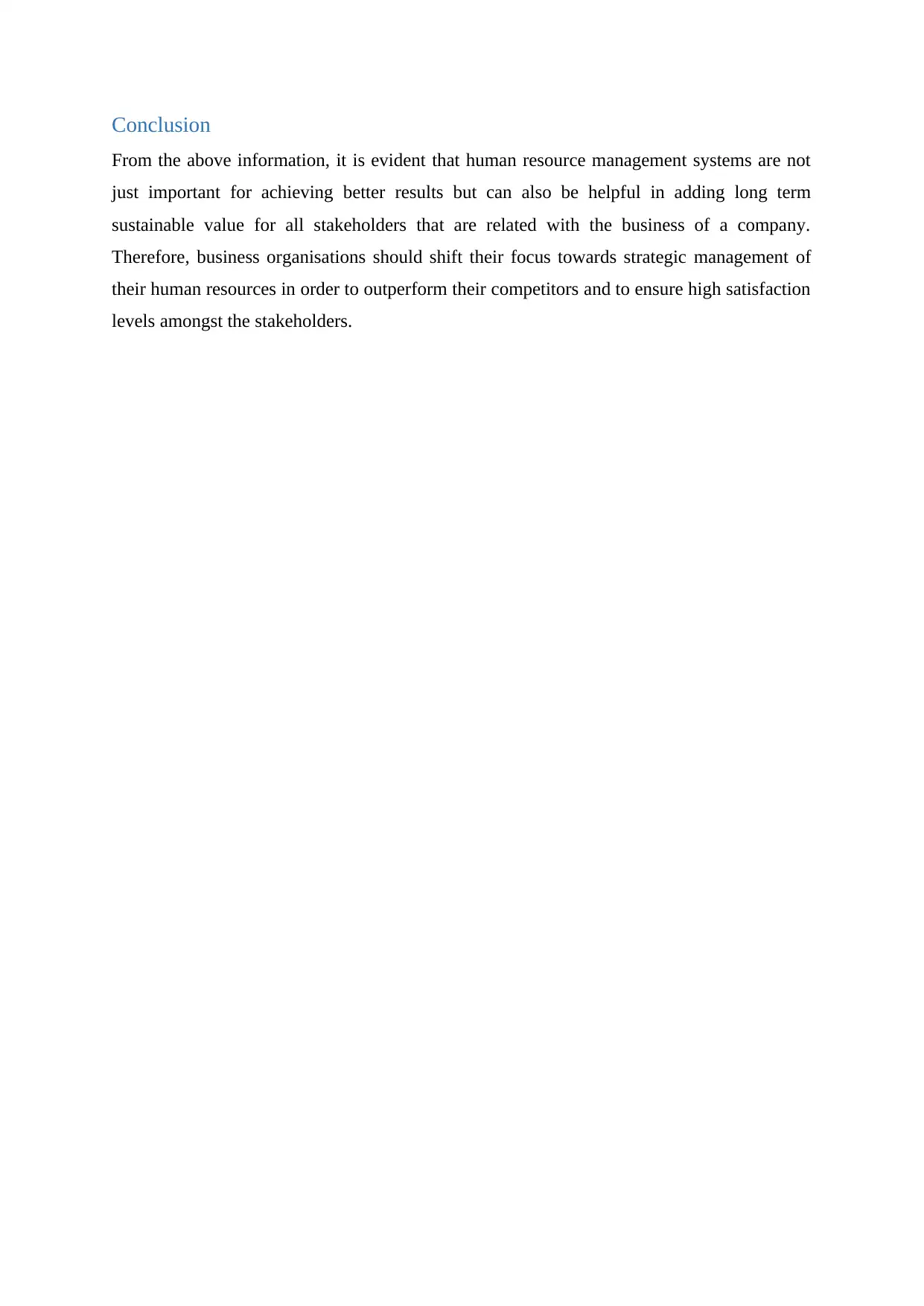The Impact of HRM: Building Sustainable Stakeholder Value Analysis
VerifiedAdded on 2023/06/13
|7
|1591
|95
Report
AI Summary
This report examines the role of human resource management (HRM) in creating long-term, sustainable value for various stakeholders, including employees, employers, investors, and customers. It highlights how strategic HRM practices, such as training and development, performance management, and employee retention, contribute to increased employee skills, improved work conditions, and enhanced motivation. For employers, effective HRM systems foster strong employee relations, attract and retain talent, and optimize organizational performance. Customers benefit from a well-managed and motivated workforce that delivers innovative products and exceptional service, leading to enhanced market reputation. Investors gain from minimized operational costs, increased profitability, and higher share values resulting from efficient HRM practices. The report concludes that organizations should prioritize strategic HRM to outperform competitors and ensure stakeholder satisfaction, emphasizing its importance in achieving business success and building lasting relationships.
1 out of 7













![[object Object]](/_next/static/media/star-bottom.7253800d.svg)